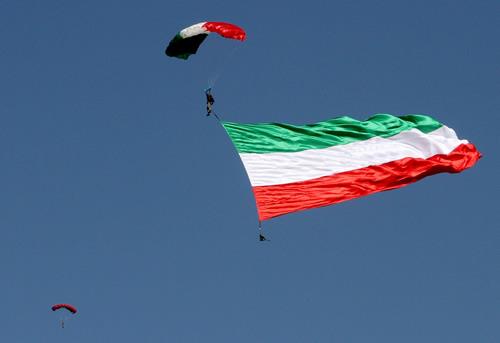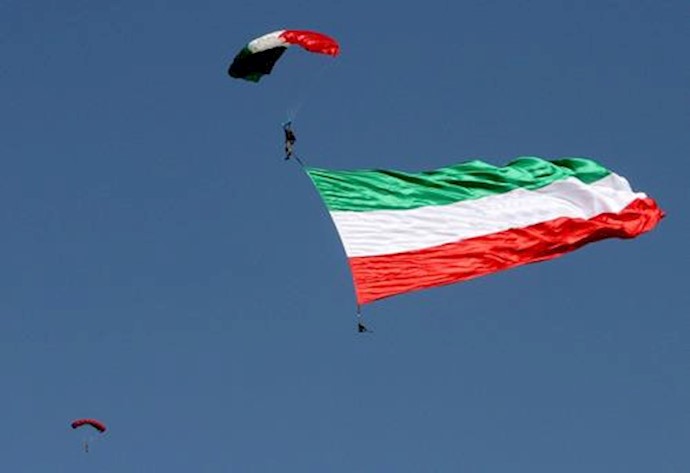By Tony Duheaume
Al Arabiya , 24 August 2017 – In the late 1980s, Iran’s revolutionary leader Ruhollah Khomeini built a force out of his infamous Islamic Revolutionary Guard Corps (IRGC) and named this special elite unit al-Quds Force.
Forged to spread Khomeini’s revolution to foreign lands, al-Quds became responsible for carrying out the IRGC’s extraterritorial operations. In no time, al-Quds became an effective force for exporting the Iranian revolution, first to neighboring lands and then to countries across the globe.
The hideous modus operandi
Since the time of its establishment, al-Quds started contacting terror groups and militant Shia political organizations throughout the region who shared its agenda of creating an all-powerful Shiite empire, which would eventually encompass the entire Middle East and be controlled from Tehran.
Then with the aid of Hezbollah – the proxy terror group it created in the early 1990s – al-Quds sought to bring an end to Western influence in the Middle East, as well as the downfall of Gulf monarchies.
As part of its agenda to destabilize Sunni states, al-Quds Force used Hezbollah agents to infiltrate various Shia organizations within these countries, especially in Bahrain and Saudi Arabia. With a program to rake up violent insurrection by causing chaos and confusion, these agents worked hard to bring about an end to the region’s Sunni monarchies, with an endgame to install Shiite administrations loyal to the Iranian regime.
As part of this campaign, al-Quds carried out several terror attacks like the bombing of the US Beirut Embassy on April 18, 1983, the US Marine and French forces barracks bombings on October 23 of the same year and the1996 bombing of the Khobar Towers apartment complex in Saudi Arabia.
Al-Quds agents carried out a series of other terror attacks and fomented violent demonstrations on the streets. In all these cases, its aim was to cause serious insurrection, but its tactics were eventually thwarted by the authorities.

Iranian paratroopers perform during a parade marking the country’s Army Day, on April 18, 2017, in Tehran.
Iraq the front for US-Iran war
In a bid to spread the Iranian Revolution at a much faster clip, al-Quds decided to test its mettle in Iraq after the demise of Saddam Hussein. But here it faced its biggest challenge to date when the Bush administration reportedly planned a US invasion of Iran over the latter’s secretive nuclear program.
In response, al-Quds Force decided to take the fight to the US coalition troops. To begin with, it enlisted many Iraqi Shia insurgent groups to its aid and trained them in the fundamentals of guerrilla warfare at IRGC-Quds Force training camps on the Iran-Iraq border. It also taught them the basics of urban warfare and equipped them with the means to attack invading forces more effectively.
The Iranian regime wanted US troops to remain engaged in a long and protracted guerrilla war in Iraq, to keep raising the body count there, as had happened with the Soviets after their invasion of Afghanistan. The Iranian regime was also looking at the US debacle in Vietnam and its toll on the psyche of the US public.
According to Iran, if the Iraq war could claim thousands of American lives, the US administration would eventually be forced by public opinion to pull out its troops and leave behind a military vacuum for Iranian forces to fill. Tehran thought it will be a victory for Iranian military without actually having gone to war.
Al-Maliki: The Iranian Trojan
But this wasn’t the only goal that the regime’s leaders were determined to effect. Once President Mahmoud Ahmadinejad became president of Iran in 2005, he was convinced that not only could he build Iran into a superpower that discomfits the US but could also defeat its military sway over the entire region, through the use of asymmetric warfare employed by its proxy forces.
On 20 May 2006, the US installed President Nouri al-Maliki as Iraq’s president, thinking it had installed a Western lackey, even though al-Maliki had spent many years of his exile in Iran. After a very short honeymoon, the new Iraqi president started showing his true colors and fell completely under the sway of Tehran.
It seemed that the Iranian regime finally got its wish with Barack Obama entering the White House. Having an agenda of ending the US commitment in Iraq, he eventually withdrew all US combat troops from the country by 8 December 2011. As the US-led coalition troops left the scene, having destroyed Saddam’s Baath Party, the marginalization of Sunnis from all public institutions, a country in turmoil, and a severely weakened military, al-Quds Forces decided to enter the scene in right earnest.
With the withdrawal of US forces, the Maliki administration stepped up the purge of Sunni politicians. On the very next day following the withdrawal of American troops, the Iraqi regime issued an arrest warrant against Sunni Vice-President Tariq al-Hashimi, accusing him of running death squads.
Hashimi fled to Kurdistan for refuge, but he was tried in absentia and sentenced to death. Shortly after the US withdrawal, Iranians moved into Iraq in a big way. Maliki found out that his Iranian patrons were willing to back him to the hilt, and so the despotic Iraqi leader began a witch-hunt to sweep all Sunni politicians out of government.
ISIS: An excuse for Iran’s ambitions
In 2014, ISIS took control of vast swathes of Iraqi territory. By this time, Iraqi administration was fully infested with Iranian lackeys, and it seemed Iraq was effectively controlled by Tehran.
With the Iraqi army proving ineffective against the advance of the terror proto-state, Iranians received invitation from Maliki to help Iraqi forces in the war against ISIS. In no time, Al-Quds troops entered Iraq under the command of its leader Major General Qassem Soleimani.
By this time, Iranian regime was able to fully influence the decision-making process through its penetration of religious and government authorities and its monetary aid to Shiite institutions. It also provided other forms of assistance, including the maintenance and improvement of roads, allowing Iraqi access to its sea ports, providing electricity, supply of animal products and hygiene related products, as well as various types of medicine.
In addition, Iran sent technical advisers, provided training and supplied small arms to the Iraqi military. As for heavy weapons and equipment, it provided Iraq with Iran-modified Russian T72S tanks, Iranian made ‘Safir’ jeeps, Iranian ‘Sayyad’ 50 calibre sniper rifles as well as surveillance drones and built command centres.
Tehran eyes a waxing arc
It was during the campaign against ISIS that Soleimani brought several Shia militia groups under one umbrella, calling the new group the Popular Mobilisation Unit (PMU). With the Iraqi administration eventually passing a law to integrate Shia militia groups into the regular army, its commanders took control, putting the Iraqi military effectively under the command of Soleimani.
With the ISIS threat having been effectively neutralized, the question of the terror group’s control of Iraq is no longer an issue. Iraq has virtually become part of the Iranian state – both militarily and politically. This now opens the way for Iran to effect a similar result in Syria, and the final piece of the jigsaw now seems in place to complete Iran’s Shiite Crescent.
Tony Duheaume









